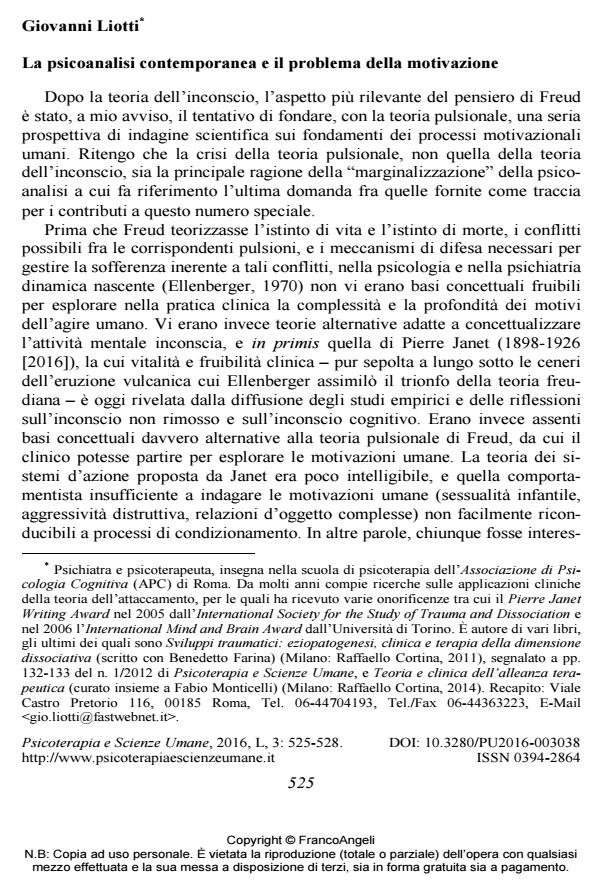Le risposte. La psicoanalisi contemporanea e il problema della motivazione
Journal title PSICOTERAPIA E SCIENZE UMANE
Author/s Giovanni Liotti
Publishing Year 2016 Issue 2016/3
Language Italian Pages 4 P. 525-528 File size 27 KB
DOI 10.3280/PU2016-003038
DOI is like a bar code for intellectual property: to have more infomation
click here
Below, you can see the article first page
If you want to buy this article in PDF format, you can do it, following the instructions to buy download credits

FrancoAngeli is member of Publishers International Linking Association, Inc (PILA), a not-for-profit association which run the CrossRef service enabling links to and from online scholarly content.
- La crisi della teoria freudiana delle pulsioni Paolo Migone, in PSICOBIETTIVO 3/2018 pp.48
DOI: 10.3280/PSOB2018-003005
Giovanni Liotti, Le risposte. La psicoanalisi contemporanea e il problema della motivazione in "PSICOTERAPIA E SCIENZE UMANE" 3/2016, pp 525-528, DOI: 10.3280/PU2016-003038